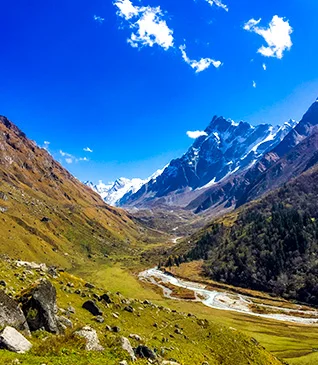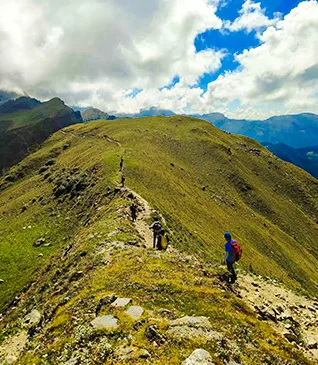Located in the heart of Tanzania, Mount Kilimanjaro stands as Africa’s highest peak and the world’s tallest free-standing mountain. This freestanding dormant volcano has attracted adventurers from all over the globe and a trek to the summit leads you through some diverse ecosystems. It’s a challenging and thrilling climb and an immersive cultural experience. The Kilimanjaro trek offers a selection of routes, each with unique characteristics and challenges. Popular routes include the Machame, Marangu, Lemosho, and Rongai, catering to a range of preferences in terms of duration, scenery, and difficulty.
Ascending Mount Kilimanjaro is akin to traversing various climatic zones. The journey takes trekkers through lush rainforests, alpine meadows, arctic deserts, and glacial landscapes. This ecological diversity contributes to the trek's allure, offering a microcosm of climate zones in a relatively compact area. Along the Mount Kilimanjaro Trek, the trekkers have the opportunity to interact with the indigenous Chaga people, learning about their traditions, folklore, and way of life. The presence of experienced guides and porters adds a personal touch to the cultural exchange.
Accessible to both seasoned climbers and novices with proper preparation, Kilimanjaro welcomes individuals of varying fitness levels. The inclusive nature of the trek has made it a popular choice for those seeking a challenging yet achievable adventure.
Location & Accessibility
.webp)
Located in East Africa, Mt. Kilimanjaro stands proudly in Tanzania, near the border with Kenya. It is situated within the Kilimanjaro National Park and is a dominant feature of the Tanzanian landscape. The mountain is a dormant stratovolcano, comprising three distinct cones: Kibo, Mawenzi, and Shira.
The primary gateway to Kilimanjaro is the Kilimanjaro International Airport (JRO). This airport is well-connected to major international airports, making it relatively convenient for trekkers arriving from various parts of the world.
Nearby Cities
Arusha: A popular starting point for Kilimanjaro treks, Arusha is a vibrant city approximately 70 kilometres (43 miles) away from Kilimanjaro International Airport.
Moshi: Located even closer to Kilimanjaro, Moshi is another common base for trekkers. It is approximately 35 kilometres (22 miles) from the airport.
Ground Transportation
Roads: Well-maintained roads connect the major cities of Arusha and Moshi to the Kilimanjaro National Park. The journey from either city to the park takes around 1-2 hours, depending on the chosen route.
Unique Ecological Zones of Mt Kilimanjaro
Mount Kilimanjaro in Africa is a geological marvel boasting a variety of ecological zones. As trekkers ascend their slopes, they traverse through distinct landscapes, each characterized by unique flora, fauna, and geological features. The Kilimanjaro trek unfolds like a journey through different worlds, revealing the following ecological zones:
Cultivated Zone (Lower Slopes)
Elevation: Approximately 800 to 1,800 meters (2,600 to 5,900 feet)
Characteristics: The trek begins in the cultivated zone, where lush farmlands and villages dot the landscape. Banana and coffee plantations thrive in this fertile region.
Rainforest Zone
Elevation: 1,800 to 2,800 meters (5,900 to 9,200 feet)
Characteristics: As trekkers ascend, the cultivated landscape gives way to a dense rainforest. Towering trees, moss-covered ground, and vibrant vegetation create a verdant and humid environment. Colobus monkeys and various bird species are common inhabitants.
Heath and Moorland Zone
Elevation: 2,800 to 4,000 meters (9,200 to 13,100 feet)
Characteristics: The rainforest gradually transitions into the heath and moorland zone. Trees become sparse, replaced by shrubs, heather, and unique plant species adapted to the cooler temperatures. This zone offers expansive views of the surrounding landscape.
Alpine Desert Zone
Elevation: 4,000 to 5,000 meters (13,100 to 16,400 feet)
Characteristics: The landscape transforms into an otherworldly alpine desert. Barren and rocky, this zone is marked by volcanic features and surreal rock formations. Trekkers may encounter the distinctive Senecio and Lobelia plants, adapted to the harsh conditions.
Arctic Zone (Glacial)
Elevation: 5,000 meters (16,400 feet) and above
Characteristics: The final stretch before the summit of Mt. Kilimanjaro trek is the Arctic zone, where trekkers face the challenges of high altitude and sub-zero temperatures. Glacial ice and snow dominate this zone, leading to the summit – Uhuru Peak. The glaciers, although receding, contribute to the unique beauty of Kilimanjaro's summit.
Flora and Fauna
Banana and Coffee Plantations, towering trees, ferns, epiphytes, mosses and orchids, lobelias, hardy shrubs like Helichrysum, and unique alpine plants such as Groundsel and Alchemilla are some unique flora belonging to the region.
Colobus Monkeys, turacos, hornbills, sunbirds, eagles and hawks are some common animal and bird species spotted during the Mount Kilimanjaro.
The Different Climbing Routes
Embarking on the trek to Kilimanjaro's summit is a thrilling adventure, and the journey is defined by the choice of climbing route. Each route presents its challenges, landscapes, and experiences, catering to different preferences and levels of trekking expertise. Here's an overview of the various climbing routes to the majestic Uhuru Peak:
1. Route (Coca-Cola Route)
Characteristics:
→ Known as the "Coca-Cola Route" due to its relative popularity.
→ Gradual slopes and well-defined paths.
→ Offers hut accommodation, providing a more comfortable experience.
Landscape:
→ Diverse landscapes from rainforest to alpine desert.
Challenge Level:
→ Considered one of the less challenging routes, suitable for beginners
2. Machame Route (Whiskey Route)
Characteristics:
→ Often referred to as the "Whiskey Route" for its more challenging nature compared to Marangu.
→ Spectacular views and diverse landscapes.
→ Tent accommodation throughout the trek.
Landscape:
→ Varied landscapes, including rainforest, heath, and alpine desert.
Challenge Level:
→ Moderate to challenging, suitable for those seeking a more demanding climb.
3. Lemosho Route
Characteristics:
→ Offers a longer and more gradual ascent, aiding acclimatization.
→ Less crowded than Marangu and Machame.
→ Combines the best of both routes in terms of scenery.
Landscape:
→ Diverse landscapes, from rainforest to glacial zones.
Challenge Level:
→ Moderate to challenging, suitable for those with trekking experience.
4. Rongai Route
Characteristics:
→ Approaches Kilimanjaro from the north.
→ Offers a unique perspective with fewer crowds.
→ Known for its wilderness feel.
Landscape:
→ Diverse landscapes, from rainforest to arctic desert.
Challenge Level:
→ Moderate, suitable for trekkers seeking a quieter route.
5. Northern Circuit Route
Characteristics:
→ The longest route, circling around the northern slopes.
→ Maximum acclimatization time, increasing summit success rates.
→ Less crowded and ideal for those seeking a remote experience.
Landscape:
→ Varied landscapes, showcasing Kilimanjaro's diverse ecosystems.
Challenge Level:
→ Moderate to challenging, suitable for experienced trekkers.
6. Umbwe Route
Characteristics:
→ Known as the most challenging route due to the steep ascents.
→ Less crowded, providing a sense of isolation.
→ Offers stunning views of the Western Breach.
Landscape:
→ Varied landscapes, including dense forest and alpine desert.
Challenge Level:
→ Challenging, and suitable for experienced and confident trekkers.
Factors to Consider in Route Selections
→ Your level of trekking experience and comfort with challenging terrains. Routes vary in difficulty, with some being more suitable for beginners, while others are designed for experienced trekkers.
→ The rate of ascent and the time allocated for acclimatization should be considered. Slower ascents and routes with longer durations increase acclimatization, improving the chances of summit success and reducing the risk of altitude sickness.
→ Different routes offer unique perspectives, from lush rainforests to arctic deserts. Consider the type of scenery you want to experience.
→ Some routes are more crowded than others. If you prefer a quieter experience, consider less popular routes.
→ Longer routes often allow for better acclimatization but may require more time and commitment.
→ Different approaches offer varied perspectives and challenges. Choose an approach that aligns with your preferences.
→ Some routes may have more stable weather conditions during certain times of the year, impacting the overall trekking experience.
→ Some routes may be more budget-friendly than others. Consider the total Kilimanjaro trek cost when making your decision.
Machame Route & Its Highlights
We conduct the Kilimanjaro Expedition via the Machame Route and here are some highlights of the route:
Campsites and Accommodations
The Machame Route features a range of campsites, each with its unique charm. These campsites offer everything from basic tents to comfortable huts. The accommodation varies depending on the route chosen, but all provide shelter and a place to rest. As you ascend, you'll notice the landscape changing, from lush rainforests to alpine deserts, with corresponding shifts in campsites and scenery.
Experiencing the Diverse Ecosystems
Kilimanjaro is renowned for its diverse ecosystems, and as you ascend, you'll witness these changes firsthand. You'll trek through lush rainforests teeming with wildlife, traverse the moorlands, and ascend rocky trails in the alpine desert. The range of environments and ecosystems you encounter on Kilimanjaro is a true marvel and a testament to the mountain's unique character.
Wildlife Encounters
As you ascend through various ecological zones, you may be fortunate enough to have close encounters with unique species. Kilimanjaro is home to a variety of animals, and you might spot Colobus Monkeys. These black-and-white monkeys often swing through the trees of the rainforest. Blue Monkeys, known for their striking bluish fur, herds of buffalo, particularly in the heath and moorland zones.
The Stunning Vistas and Sunrises
One of the most remarkable aspects of climbing Mount Kilimanjaro is the breathtaking scenery and the unforgettable sunrises. From the rocky slopes of the mountain, you'll witness the world unveil itself in shades of orange, pink, and purple as the sun breaks over the horizon. The sweeping panoramas of the African plains below are an awe-inspiring sight.
The Climb to The Summit
You'll be woken up in the dead of night to start your final ascent. The final push to Uhuru Peak is an arduous yet thrilling endeavour. You'll traverse the crater rim, negotiating scree and steep terrain, as the oxygen levels thin. With determination and the support of your guides and fellow trekkers, you'll reach Uhuru Peak. The sense of accomplishment and the panoramic view of Africa from its highest point is simply unparalleled.
The Best Time To Visit Kilimanjaro
The dry season from June to October and December to February is the best time to do the Kilimanjaro Trek.
→ During this time there is minimal precipitation and the skies are clear.
→ Summit success rates are high due to favourable weather.
→ Warmer temperature at lower altitudes.
→ Excellent visibility for panoramic views.
How Challenging Is The Kilimanjaro Climb?
The challenge level of the Kilimanjaro climb varies depending on factors such as the chosen route, trekking experience, fitness level, and the climber's ability to acclimatize to high altitudes. The Kilimanjaro climb is challenging, but with proper preparation, training, and a well-planned itinerary, climbers of varying skill levels can undertake this adventure. Choosing the right route, acclimatizing effectively, and being mentally and physically prepared are essential components for a successful Kilimanjaro summit.
Can beginners climb Mt Kilimanjaro?
Absolutely, beginners can climb Mt. Kilimanjaro! While Kilimanjaro is a challenging peak due to its high altitude, with the right preparation, guidance, and a suitable route, individuals with little or no mountaineering experience can successfully reach its summit. Kilimanjaro is a non-technical climb, meaning it doesn't require advanced mountaineering skills or specialized equipment. No technical climbing, ice axes, or ropes are necessary. So you can choose to climb Mount Kilimanjaro even if you are a beginner.
Essential gear and equipment
Clothing
Moisture-Wicking Base Layers
→ Long-sleeved shirts and pants made of synthetic or merino wool to manage moisture and regulate body temperature.
Insulating Layers
→ Fleece or down jackets to provide warmth in colder conditions, especially during summit night.
Waterproof Jacket and Pants
→ Gore-Tex or similar waterproof and breathable materials to protect against rain and wind.
Trekking Pants:
→ Lightweight, quick-drying pants for lower altitudes and warmer conditions.
Convertible Pants
→ Pants with zip-off legs for versatility in changing temperatures.
Headwear
→ Sun hat with a brim for sun protection.
→ Beanie or hat for warmth during colder sections.
Handwear
→ Lightweight gloves for lower altitudes.
→ Insulated, waterproof gloves for summit night.
Footwear
Hiking Boots
→ Sturdy, waterproof boots with ankle support for varied terrain.
Wool or Synthetic Socks
→ Moisture-wicking and warm socks to prevent blisters.
Gaiters
→ To keep snow and debris out of your boots, especially during the ascent.
Gear
Daypack
→ 20-30L capacity for carrying essentials during daily treks.
Duffel Bag
→ Waterproof and durable, to be carried by porters.
Sleeping Bag
→ Rated for low temperatures encountered during the climb.
Sleeping Mat
→ Insulated and lightweight for added comfort.
Trekking Poles
→ Adjustable poles for stability and balance.
Headlamp
→ With extra batteries for early morning and night hikes.
Sunglasses
→ Category 3 or 4 lenses for high-altitude sun protection.
Accessories
Sunscreen
→ High SPF for sun protection at high altitudes.
Lip Balm
→ With SPF to prevent chapping.
Water Bottles or Hydration System
→ To stay hydrated throughout the trek.
Water Purification Tablets or Filtration System
→ For refilling water from natural sources.
Toiletries
→ Travel-sized toothbrush, toothpaste, biodegradable soap, and wet wipes.
First Aid Kit
→ Including personal medications, pain relievers, and blister treatment.
Snacks
→ Energy bars, trail mix, and snacks for sustained energy.
Camera or Smartphone
→ Capture memories of the breathtaking scenery.
Personal Items
Passport and Necessary Documents
→ Including trek permits, insurance, and medical information.
Cash
→ For tipping guides, porters, and additional expenses.
Trekking Permit
→ Obtain necessary permits in advance.
Physical and mental preparation for the trek
Physical Preparation
Cardiovascular Fitness
Engage in regular cardiovascular exercises such as hiking, running, cycling, or stair climbing. Aim for at least 30-60 minutes, three to four times per week to enhance endurance.
Strength Training
Includes strength training exercises to build muscle endurance, especially in the legs and core. Squats, lunges, and core exercises contribute to overall strength.
Hiking Practice
Simulate trekking conditions by gradually increasing the duration and elevation of your hikes. This helps your body acclimate to the demands of sustained walking on uneven terrain.
Altitude Training
If possible, incorporate altitude training. While nothing fully replicates high-altitude conditions, activities like hiking at higher elevations or using altitude simulation devices can be beneficial.
Consistent Exercise
Establish a consistent exercise routine well in advance of your trek. This provides ample time for your body to adapt and build the necessary strength and stamina.
Weight Management
Maintain a healthy weight to reduce unnecessary strain on your body during the climb.
Hydration
Develop good hydration habits. Drink plenty of water daily to stay well-hydrated, and become accustomed to carrying and using a hydration system or water bottles.
Mental Preparation
Positive Mindset
Cultivate a positive and determined mindset. Mental resilience is crucial during challenging sections, particularly on summit night.
Knowledge of Challenges
Understand the challenges you may face, such as altitude-related symptoms, long hiking days, and varying weather conditions. Being mentally prepared for these factors helps manage expectations.
Visualization
Visualize success. Envision yourself reaching the summit and experiencing the awe-inspiring views from Uhuru Peak. Positive visualization can boost confidence and motivation.
Mental Resilience Techniques
Learn and practice mental resilience techniques, such as mindfulness and breathing exercises. These can help manage stress and anxiety during the trek.
Adaptability
Be adaptable to changing conditions and expectations. Flexibility in your approach helps you navigate unforeseen challenges.
Goal Setting
Set realistic and achievable goals for each day of the trek. Celebrate small victories to maintain motivation.
Education about Altitude
Educate yourself about the effects of high altitude and how to manage them. Knowing what to expect helps alleviate anxiety.
Training Hikes
Participate in longer training hikes to mimic the physical and mental challenges of consecutive days of trekking.
Booking your expedition
Embarking on an expedition, especially one as iconic as climbing Mount Kilimanjaro, requires careful consideration and planning. Choosing the best adventure provider is a pivotal decision that can significantly impact the success and enjoyment of your trek.
→ Conduct thorough research on different adventure providers. Look for companies with a strong reputation, positive reviews, and a track record of successful treks.
→Ensure that the adventure provider is licensed and adheres to local regulations. Look for certifications and affiliations with reputable trekking and adventure associations.
→ Verify the qualifications and experience of the guides. Experienced guides with expertise in high-altitude trekking contribute to the safety and success of your expedition.
→ Inquire about the safety measures implemented by the provider. This includes emergency evacuation plans, medical support, and equipment standards.
→ Read client testimonials and reviews. Insights from those who have previously undertaken treks with the provider can offer valuable perspectives.
→ Choose a provider with transparent pricing. Ensure that the Kilimanjaro trek cost breakdown includes all essential components such as permits, accommodation, meals, and guide fees.
→ Select a provider that offers inclusive packages covering permits, accommodations, meals, and additional services. A comprehensive package simplifies logistics and provides a seamless experience.
Kilimanjaro Expedition - FAQ
1. What kind of Tents will I sleep in?
Your tents are mountain-style, double-walled, mosquito-netted, and durably floored with waterproof material. While technically rated as a four-person tent, we comfortably accommodate two people. Tents are erected and packed up by the staff porters. There is enough space for tall people to stretch out and room for your gear within the tent.
2. What is the food like?
Expect to eat well, amply, and on time. Your cook works with a variety of fresh, canned, freeze-dried, and mixed ingredients to produce multi-course meals. We emphasise drinking plenty of fluids and you will have a choice of beverages including tea, coffee, cocoa, milk, lemonade, and water. The evening meal will include meat, soup, salad, a vegetable course, and dessert. Carbohydrates come from cereals, bread, rice, and pasta. Vegetarians are catered for as well. You may bring trail snacks and protein bars, but they are not necessary.
3. Drinking water – is it safe, and is there enough for all climbers?
There is always plenty of water at each campsite. It is boiled before distribution to climbers. While it is not needed to bring additional bottled water, you may bring flavoured water as per your preference..
4. What happens if some members of the team need to turn back before the summit?
No one is forced to go on. There is always enough staff to split the party according to need and regroup later at the camp. Most people have no trouble reaching the highest campsite. If some members decide not to climb the final distance they can wait for the climbers to come back down the same way or take a lateral path to the descent route.
5. What kind of help is available in case of emergency?
We always have a first aid kit close at hand. Serious injuries are rare. Porters will assist injured climbers to the base of the mountain and onward to a clinic or hospital. Kilimanjaro International Airport is very near Marangu Gate if evacuation to the US or Europe is advisable.
6. What is the best time of the year to climb Kilimanjaro?
You can climb any month of the year. At lower elevations, April, May, and November are quite wet while March and June are transition months. August and September are the coldest and driest months. January, February, July, August, and September are all popular climbing months.
Kilimanjaro’s dry season, and also the busiest time to climb, is June through October. December through February is also a busy time on the mountain although there tends to be more rain and snow. Clear skies are more likely from June to October, as the cloud cover burns off after the tree line. Because Kilimanjaro is such a large mountain, it has its own weather pattern – it often rains on Kilimanjaro when it is not raining elsewhere. You should prepare for rain and have your rain gear with you at all times while on the mountain. The coldest temperature experienced at the summit is around -30C. The lower elevations can be quite hot, so pack for a wide range of temperatures.
7. How much weight will I have to carry, where can I leave things not needed on the climb?
You will simply carry a daypack of about 5-6 pounds, though some people carry more or less. Your gear, not to exceed 33 pounds, will be placed inside a waterproof duffel at the trailhead, and a porter will carry this for you. If you have things you do not need on the climb, you may leave a bag behind at Arusha.
8. What kind of staff will accompany me on the climb?
The usual ratio is three local staff for each climber, although small groups may have four staff per climber. These usually consist of an English-speaking guide or guides, a professional cook, and gear-carrying porters. We encourage you to interact with your staff, though some will have limited English. They are all trustworthy local people who have grown up in the shadow of the mountain. Many of them have climbed the peak 50 or more times.
9. What is provided and what do I have to bring?
We provide tents, food, utensils, and leadership. You should bring your own sleeping bag rated to 10 degrees F., water system, personal clothing, sleeping pad, light duffle bag, and day pack. Hiking poles can be rented for $10 for the trip. A packing list is provided to all climbers, along with our pre-departure packet.
In this comprehensive guide, we've endeavoured to equip you with the essential knowledge needed to embark on the extraordinary adventure of climbing Mount Kilimanjaro. Now armed with the knowledge to plan your Kilimanjaro trek, we invite you to take the leap. Step into the unknown, breathe in the crisp mountain air, and witness the sunrise from Uhuru Peak. The challenges may be great, but the rewards are immeasurable!
.webp)
The Best Places to Visit in Dehradun
.webp)
Phulara Ridge Trek - Explore the Hidden Ridge in Himalayas
 (1).webp)
Trek Update: Valley of Flowers and Hampta Pass are Fully Accessible for Exploration
 (1).webp)
Har Ki Dun - Best Autumn Trek
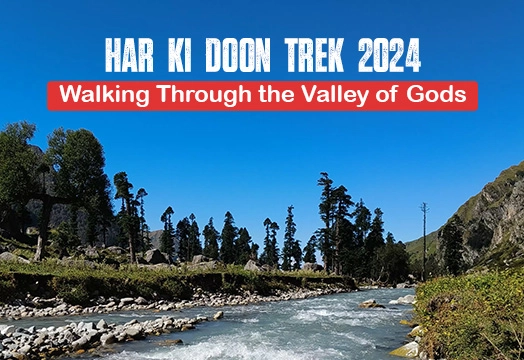
Har Ki Doon Trek 2024 - Walking Through the Valley of Gods
.webp)
Best Time for Kedarkantha Trek in 2024
.webp)
Post-Monsoon Marvel of EBC Trek and Annapurna Circuit Trek
 (1) (1).webp)
Discovering Goechala - A Himalayan Adventure
 (2).webp)
Adi Kailash Yatra : A Spiritual Journey to the Abode of Lord Shiva
.webp)
Know the Hidden Gem- The Brammah Valley Trek
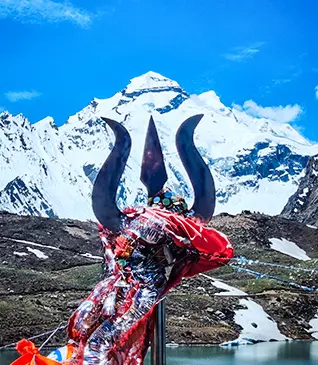
.webp)
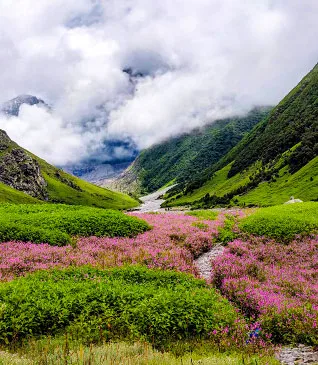
.webp)
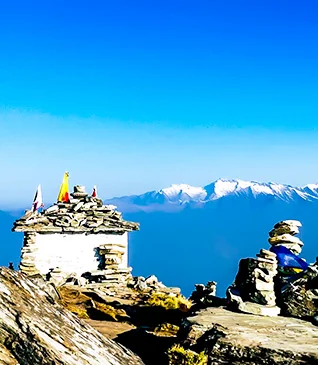
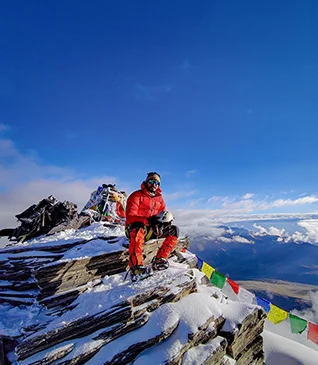
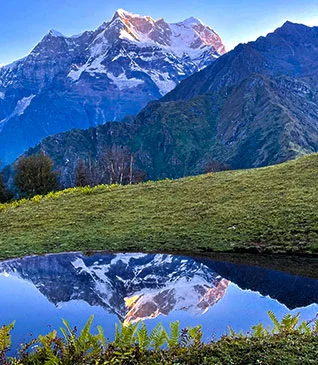
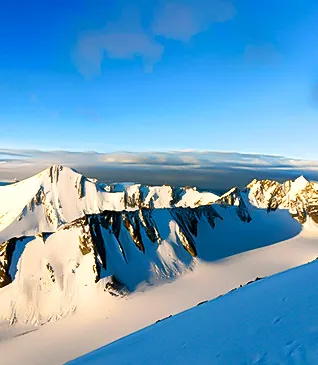
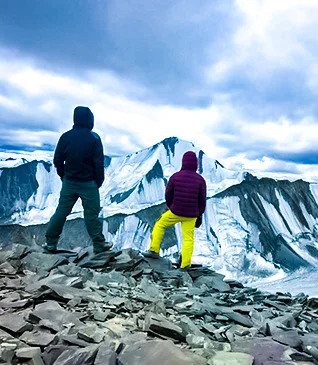
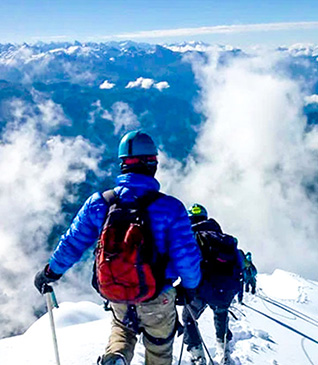
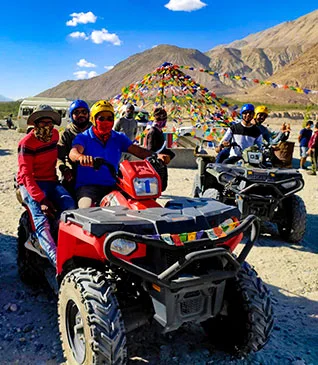
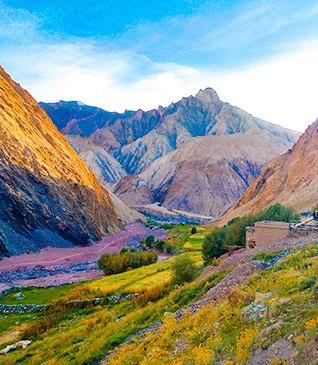
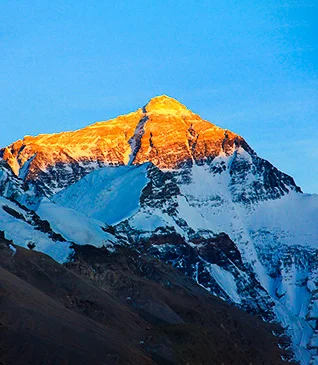
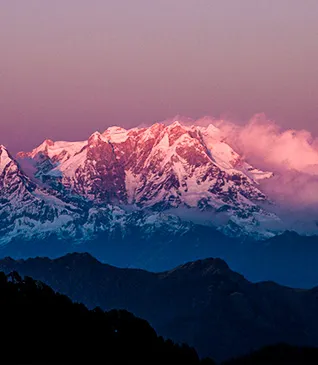
.webp)
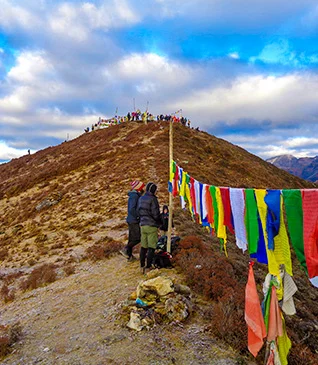
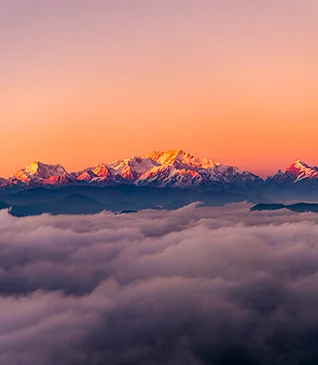
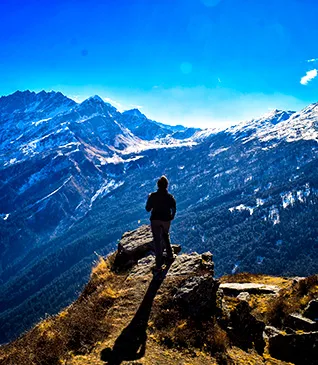
.webp)
